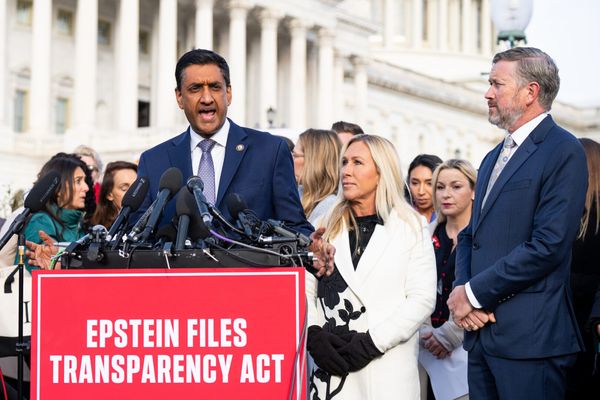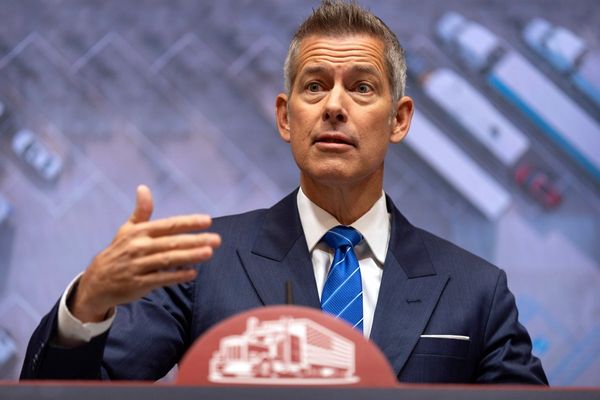
Maybe it’s true what they say about real life-or-death stakes not applying to superheroes. The past couple of years have looked pretty deadly for the once-ubiquitous American superhero movie, with just two such films placing on the list of 2024’s top-grossing movies in the US, and three in 2023. (2022 had as many as both of those years combined on its own list, and the top four of 2021 were all superhero-led.) More than the lack of hits – Deadpool & Wolverine certainly made enough on its own to encourage another decade of team-ups – the genre has been threatened by a growing number of flops. Sequels to blockbusters like Joker and Aquaman nosedived from their predecessors. Would-be franchise starters like The Flash, Madame Web and Kraven the Hunter failed to spark any interest. Even a Marvel movie literally called The Marvels underperformed.
2025 seemed to follow this trend line, with Marvel’s Captain America: Brave New World and Thunderbolts both underwhelming at the box office. Even reviews, so often prone to giving MCU entries a pass and conferring upon them a sense of unearned prestige, didn’t seem to move the needle much: Thunderbolts got much better notices, and that plus a plum summer-kickoff release date were good for … well, slightly less money than the terrible Captain America sequel. But this July, things have been looking up. Specifically, up in the sky: DC kicked off their new cinematic universe with a Superman movie, just as it did in 2013 with Man of Steel, only this time, audiences and critics seem to actually like it as their signature hero flies past $500m worldwide in less than 20 days. Meanwhile, another reboot of the cursed-seeming Fantastic Four didn’t seem like a sure thing. But Marvel’s The Fantastic Four: First Steps is hitting numbers similar to Superman. It will probably pass both of its corporate siblings within a couple of weeks.
So what did the two biggest superhero brands do so right this summer? “Make good movies” is always an easy answer, but an unhelpfully subjective one. For example, Thunderbolts seemed to have audiences and critics in its favor, too. As it happens, these newest incarnations of Superman and The Fantastic Four have something more concrete in common. They’re both rooted in the Silver Age of comics, which lasted from 1956 to 1970 and featured more superheroes, more outlandish foes, and a lot of fantastical sci-fi, monsters and genre-bending. Most of Marvel’s most beloved characters were introduced during this period, ushered in by the debut of the Fantastic Four in 1961, and a world where Superman casually interacts with a litany of other heroes (and/or fights giant monsters) is more visible in Silver Age comics.
General audiences wouldn’t know the Silver Age from the Silver Surfer (or even, necessarily, that the latter is the name of a CG character played by Julia Garner in the new Fantastic Four movie). But they may nonetheless pick up on some of its stylistic advantages. First, there’s an assumption that audiences don’t need a grand retelling of an origin story – and that somewhat counterintuitively, it will be easy for newcomers to jump into these stories without much background knowledge. Superman and Fantastic Four explain their heroes’ origins in passing, but don’t make it the subject of the movie, and assume, seemingly correctly, that audiences don’t need to be reoriented in their worlds just because they have robots, flying cars and/or superdogs. As wild as some of the Silver Age stories were (and as serialized as some of its biggest characters eventually became), early on there was little expectation that a kid would absolutely need to read 20 or 30 previous issues before picking up the latest adventure from the drugstore.
“Kid” is the other key element here: Superman and Fantastic Four both look like bright, zippy adventures with kid appeal, and they mostly are, give or take some baby peril and one nasty execution. That appeal isn’t always enough on its own. (No one seemed to notice or care that The Marvels made for a fine kids’ movie.) But both Fantastic Four and especially Superman seem to accept a variation on the old Pauline Kael quote about movies being so rarely great art that you must appreciate great trash: Superhero pictures are so rarely multifaceted and nuanced movies for grownups that they ought to at least be movies that are actually fun for kids. Can you picture a child watching Captain America: Brave New World?
That also ties back into the relatively stand-alone nature of Superman and The Fantastic Four: an 11-year-old in 2025 isn’t necessarily going to go to the movies having looked over a whole syllabus of lore. Decent as it is, Thunderbolts is partially a sequel to Black Widow, and features characters whose previous adventures were chronicled in two different TV shows and an unrelated Ant-Man sequel. It’s legible without seeing all of those predecessors first, but does it make sense without any of them? Fantastic Four does! Well, at least until a mid-credits teaser scene whose portent has no in-movie, in-world context for people unfamiliar with comic books or, at minimum, industry press releases.
In those few minutes, the Fantastic Four movie also teases how easily DC and Marvel could unlearn these lessons. Marvel doesn’t exactly have a reformed lineup of newly stand-alone adventures in the pipeline. Quite the opposite: the next MCU film, due out in a year, is a fourth Spider-Man movie starring Tom Holland. To be clear, no one has to worry about it hitting; Spider-Man and Batman are about as immune to superhero ills as possible. But Spidey co-parent Sony keeps those movies coming out at a steady clip, while Disney-owned Marvel remains in hot pursuit of something bigger than merely mixing new heroes, sequels, and occasional team-ups. They want another Avengers: Endgame.
The seeming superhero fatigue of the past few years has been, in part, a victim of the MCU’s massive success. That series barreled toward a quasi-finale event with Endgame in 2019, and has been laboring to convince fans that something equally massive is coming their way, rather than retraining them not to expect vast 30-character crossover events every few years. The most recent individual films featuring Doctor Strange, Black Panther, Spider-Man and Thor were all big hits, as was an introduction to the character Shang-Chi. But only Spider-Man has a definite sequel on the horizon, the rest a victim of the baffling strategy to forgo normal sequels, instead running in a half-dozen directions at once before calling everyone back into the pool for another diptych of mega-crossovers: Avengers: Doomsday and Avengers: Secret Wars, coming Christmas 2026 and 2027. Obviously people will see these movies, especially with Robert Downey Jr returning to play Doctor Doom. But in their relentless pursuit of Endgame II: Endgamier, Marvel could be backing themselves into another corner. The Fantastic Four invites audiences to jump right into their alternate universe of retro-futuristic 1960s style. Doomsday and Secret Wars promise a huge event, a possible reset, and, what? Some fun superhero movies again in a few years, once the dust clears?
DC, meanwhile, will revive some of the Superman supporting characters for a second season of Peacemaker (which, in a hilarious and unprecedented bit of confusion, follows up a first season that originated in a completely different DC Universe – the previous one, with the big Aquaman and Wonder Woman movies). Its next movie is Supergirl, featuring Superman’s cousin, who makes a brief preview appearance in the current film. The June 2026 project is based on Supergirl: Woman of Tomorrow, a comics miniseries that should, theoretically, stand alone; if anything, it’s a riff on the book and film True Grit more than any other DC lore. (Superman does not appear in its pages, though that could change for the movie.) That the Supergirl film is supposedly a direct adaptation is the most encouraging thing about it. Not because audiences particularly crave close adaptations of comic books they probably haven’t read and may be hard to translate to the screen, but because superhero movies have become so often inspired by each other, rather than the more stylistically diverse art that inspired them. Superhero origin stories may be passé, but returning to their origins as a century’s worth of comics may inspire some more life yet.







